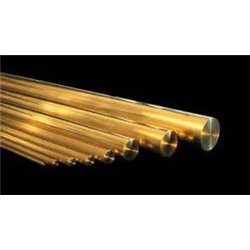Static grass puffer bottles work by manually charging model grass fibres with static electricity. When the charged...
No products
Product successfully added to your shopping cart
There are 0 items in your cart. There is 1 item in your cart.
Search Tips
What is S scale?
The S scale denotes a ratio of 1:64. This scale signifies that one unit of measurement on the model corresponds to 64 units on the actual train or landscape it represents. Commonly known as "S gauge" in the UK, this scale offers a distinct balance between detail and size, making it a favourable choice among railway modellers. The appeal of the S scale lies in its ability to capture intricate details while maintaining a size that is not overly cumbersome, thus catering to a wide range of hobbyists.
Model railways in the S scale run on tracks with a gauge of 22.5 mm. This track gauge is specifically designed to align with the scale’s 1:64 ratio, ensuring that the proportions of the model trains and their tracks are both accurate and aesthetically pleasing. Enthusiasts appreciate the S scale for its realistic representation of trains and scenery, providing a more immersive and satisfying modelling experience. The scale's popularity has been growing, particularly among those who find the smaller HO scale models too minute and the larger O scale models too bulky.
One of the significant advantages of the S scale is its versatility. It strikes a middle ground between the smaller, more delicate HO scale (1:87) and the larger, more robust O scale (1:48). This versatility allows modellers to build detailed layouts without requiring an extensive amount of space, which can be a critical factor for those with limited room for their hobby. The S scale’s size is large enough to allow for the inclusion of fine details, such as realistic scenery and detailed train features, yet small enough to fit comfortably in most home environments.
In addition to its practical benefits, the S scale also fosters a strong community of enthusiasts who share tips, techniques, and support. Clubs and online forums dedicated to S scale modelling offer a wealth of resources for both novices and experienced modellers. The scale's blend of detail and manageability makes it an excellent choice for educational purposes as well, allowing younger hobbyists to engage with the intricacies of railway modelling. Ultimately, the S scale’s unique combination of detail, size, and community support ensures its place as a cherished and enduring choice in the model railway hobby.
Click here to receive the tips weekly in your mailbox. You can unsubscribe at any time.










